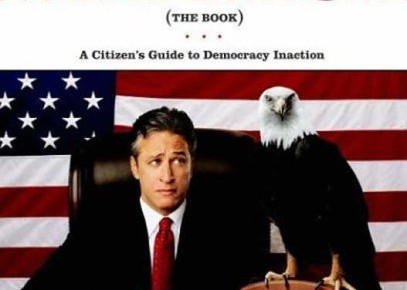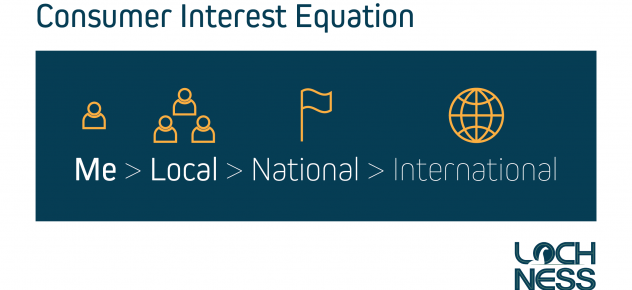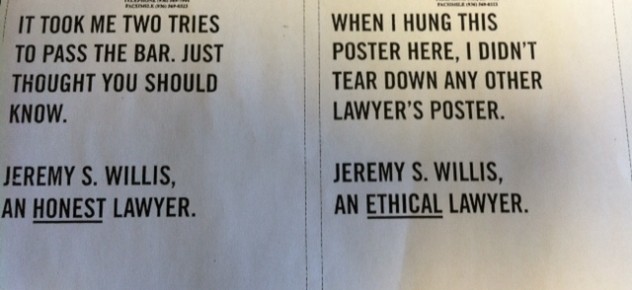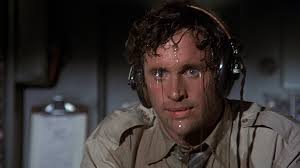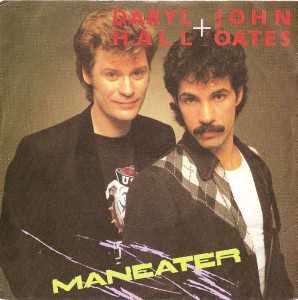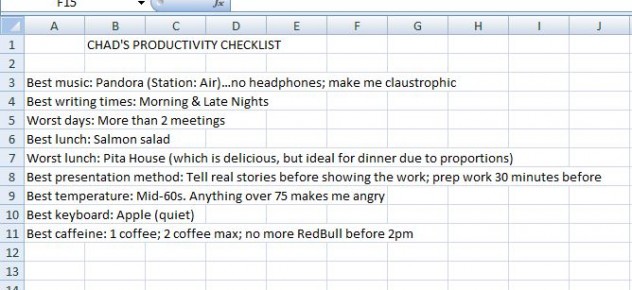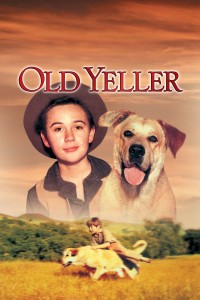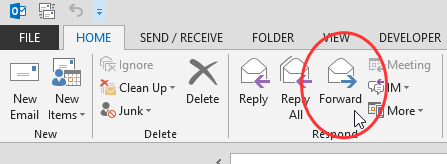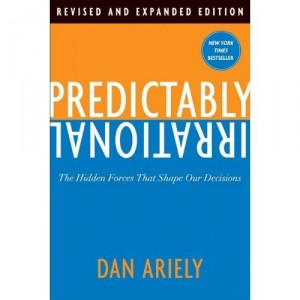38 Writing Tips from David Ogilvy That Still Sell Today (Part 2 of 2)

If you want to improve your writing—your eblasts, brochures, ads and PPC campaigns—and you want to improve your sales—online and off—then heed David Ogilvy’s advice.
If you missed Part 1 of this opus, catch up here.
20. Write like you talk: naturally. Unless your IQ is 150.
To the prospect, you do not want to be the smartest person in the room. And you do not want to be the dumbest person in the room. You want to be the prospect, with the answer to their one main problem. This tonality changes from Steinway Piano copywriting to Monster Energy Drink copywriting, of course, but you need to write like you talk, while keeping the voice of the brand intact. [Tweet “You’re not trying to impress the prospect. You’re trying to woo them. “] Ogilvy never used the word “woo” but I think he would approve.
One time, in a Hathaway ad, Ogilvy used the word “ineffable.” A reporter called to ask him what it meant. His response: “I haven’t the faintest idea.” 2
What is your brand’s voice? Find it and craft it. Weave your writing into it. Don’t overpower it. And whatever you do, fight like hell to keep the voice. One of my recent clients was a multi-billion dollar British brand, known for its technology and toughness. Its audience is, let’s say, blue collar. But that doesn’t mean I had to bow down to the client’s request of using sexy ladies and crass puns.
It isn’t the brand. Would the audience have enjoyed it? Yes, for a while. But they would have seen the brand in an entirely new light. Instead, we wooed them with benefits they wanted—more uptime, less problems—while maintaining the brand’s integrity and leadership status.
21. Write a story.
If you haven’t visited Cracked.com, go after your read this. Pay particular attention to the historical stories. It is my belief that if the staff at Cracked.com rewrote the history books in our country’s schools, utilizing humor and list formats, more children would fall in love with history than ever before. Grades would skyrocket, but who cares about grades. These kids would retain the information. That word, retain. Better yet, preserve. It is vital. The Daily Show with Jon Stewart wrote this spectacular, informative read:
It’s the greatest American history book ever written. (One man’s opinion.) OK, it’s rife with cursing and inaccuracies, but it brings the American story to life in an interesting, engaging way. Take this excerpt:
If the president is the head of the American body politic, Congress is its gastrointestinal tract. Its vast and convoluted inner workings may be mysterious and unpleasant, but in the end they excrete a great deal of material whose successful passage is crucial to our nation’s survival.11
Now compare that with this excerpt from an AP History exam:
Evaluate the effectiveness of Progressive Era reformers and the federal government in bringing about reform at the national level. In your answer, be sure to analyze the successes and limitations of these efforts in the period 1900-1920.
Sexy! Two of my favorite online writers have followed this mantra of storytelling to wildly successful careers:
Matthew Berry: ESPN Fantasy Football He used to be a TV writer, so he knows how to spin a yarn. There are thousands of fantasy football websites and gurus online. Why does he stand out? He infuses true, (sometimes very) personal stories. Here’s one about his ex-wife. (Seriously, he wrote a fantasy football article about his ex-wife. How gutsy is that?!)
Noah Kagan: OkDork & SumoMe Noah holds nothing back in his blogs or videos. You know what he’s doing in business and his personal life. He vlogs while he jogs. He shares Excel spreadsheets of his income and campaigns. He makes videos about his successes and failures. His power is transparency. (And his real-life business acumen, of course.) He rarely dispenses advice without relating it to a true, personal story. Whether he cares about me or not is irrelevant. I believe that he cares about helping me. His stories build this bridge.
Writing Homework: Go to Walmart and purchase ten identical products. Preferably, cheaper ones. (Less than $10.) Now, go sell five on Craigslist and five on eBay. Change your headlines and copy for all ten. Experiment with your story. What’s so great about this product? What pain can it cure for your prospect? Test all ten products and see what sells and what doesn’t. Ask evry customer. And take good notes. There. That’s your very first A/B test of your copy. Welcome to advertising.
22. Localize your headlines.
There’s a reason 72% of adults are attached to following local news and information.12 It’s what I call the Consumer Interest Equation:
Imagine you’re the customer. You care about you. Then, your family and friends. Then, your immediate surroundings, etc. Use this knowledge when you can in your headlines and copy.
Geo-Targed Ads
Test geo-targeted PPC ads. Test geo-targeted digital ads on Google and Bing. See what works and what doesn’t. My client wanted to sell construction equipment in Texas. Whether you know it or not, Texas likes to talk about Texas. A lot. So naturally, ads that had “Texas” in the headlines beat the pants off those that didn’t.
Be sure that your geo-targeted ads talk naturally and in the audience’s language. Don’t force the “y’all” and “you’se guys.” Your audience can sniff out an imposter like the dogs in Terminator.
Google and Bing both use IP reverse lookup, so beware of incorrect targeting on desktop advertising. For example, someone who works in New York but lives in Connecticut won’t have the same affinity for a “New York sale on garden hoses.” They’re most likely going to purchase their garden hoses near their home.
I won’t go into too many details on geo-fencing and geo-aware advertising, because I’m not versed enough in that arena to inform you, dear reader, without crossing my fingers behind my back. (I suggest you follow KISSmetrics for information on how to make the most of this new marketing tool.)
What I do know is that Google’s estimated mobile revenues are predicted to be $20.7 billion in 2016 (up from $9.9 billion in 2013), and more than half of mobile ad dollars will be location-based by 2018.13
Our goal as advertisers is to have an organic conversation with the prospect, lead them where they want to go and sell them. In that order. Geo-targeted advertising, if used properly, can practically skip the “conversation” step and get to “conversion” in the blink of an eye. Thus, making you look like a genius to your clients.
23. Don’t be boring.
Fact: lawyers are boring. They are effective and necessary in our litigious society. But let’s face it, we all have a maximum of one or two lawyer friends. Three is too much. Someone may sue for guacamole gone bad. Lawyer advertising? Just as boring. Here are the two most popular images for lawyer advertising:
-
- The “Tough Team” Approach
-
- The “Scales of Justice” Approach
-
- The “Jeremy Willis” Approach
Jeremy Willis took a different approach. The results are two of my favorite ads ever. Jeremy wanted to focus on “honesty” and “ethics,” two words that rarely describe a lawyer. Yuck yuck. (Please forgive the iPhone picture…I couldn’t find the originals.)
Standing out in the lawyers’ industry isn’t terribly difficult. Persuading your lawyer client to be unique, however, is difficult. They’ve worked 80-hour weeks to build their practice. They want their face in the advertisement. Your job as a copywriting is to create copy, content and ideas that stand out and sell. But that’s only half of the equation. You have to sell the darn copy, content and ideas for it to sell. A trick I’ve used in past projects is to create a “War Room.”
Find a room or create a science fair poster board—without the exploding volcano. Fill the walls with competitive advertising. Or drop as many into Instagram as you can, you cool cat. Find print ads, outdoor ads, digital, eblasts, whatever. Then put your concepts or headlines next to them. Show the client.
In my experience, 5% of clients have seen something like this. You would be surprised how many marketing directors have never seen their competitors’ advertising all at the same time. Or ever.
They’re so entrenched in their day-to-day operations, they just don’t have time. That’s where you come in. Help your client stand out. Don’t be boring. Don’t just be an expert on your client’s advertising. Be an expert on your client’s industry’s advertising.
Ogilvy: “You cannot bore people into buying your product; you can only interest them in buying it.”3
24. Screw grammar.
[Tweet “The greatest tagline of my generation is a grammatical dumpster fire: got milk?”] 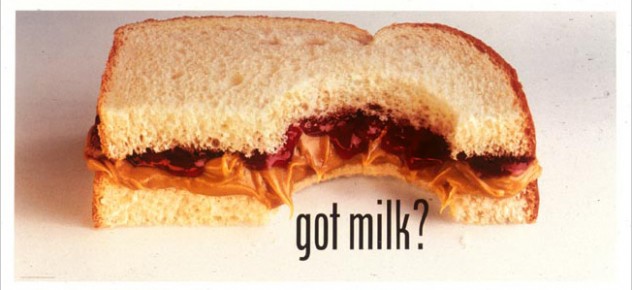 Jeff Goodby, advertising god and co-owner of Goodby Silverstein & Partners, was asked for a line to accompany a presentation board. He was in a hurry, and he tossed out the phrase “GOT MILK?” Immediately, he was asked, “Don’t you mean: Do you have any milk?” Goodby’s response, which you should print out right now and post above your bed in place of the LeBron James poster, was, “This is advertising, not a class in grammar.”14
Jeff Goodby, advertising god and co-owner of Goodby Silverstein & Partners, was asked for a line to accompany a presentation board. He was in a hurry, and he tossed out the phrase “GOT MILK?” Immediately, he was asked, “Don’t you mean: Do you have any milk?” Goodby’s response, which you should print out right now and post above your bed in place of the LeBron James poster, was, “This is advertising, not a class in grammar.”14
Ogilvy spoke of this daily grammatical tempest as “write like you talk.” I’m not telling you to break every grammar rule in the book. Be smart. Think like the prospect. If you’re a writer, and a good one, you’re a chameleon.
Yes, my personality is infused in most every marketing piece I create; however, I hope that my hot dog ads and my lift truck ads are drastically different. God help me. Many clients have asked that I dumb down my copy to the “lowest common denominator.” My response is that their prospects are smarter than they think. If you “dumb down” the marketing, you “dumb down” the brand.
Think like the prospect, but write like the brand. When you’re doing both at the same time, in harmony, that is the sweet spot of persuasion.
25. “What you say is more important than how you say it.”
Introducing the bane of my advertising existence: hanging my team’s ideas on a wall. This is an open invitation to criticism, not praise. Show your ideas to your creative director or partner or someone in the industry whom you respect, but do not hang your ideas on a wall in public before you present them. The vultures will come. And they will be hungry. Very hungry. Listen to Ogilvy:
“Once upon a time I was riding on the top of a Fifth Avenue bus, when I heard a mythical housewife say to another, ‘Molly, my dear, I would have bought that new brand of toilet soap if only they hadn’t set the body copy in ten point Garamond.’ Don’t you believe it.”3
Fret over your design and typeface. Sweat the kerning and layout. Bleed over your headline. Do not fall down the rabbit hole of perfectionism. It will destroy you. I have seen marketing directors tire of ads before they run, because they’ve seen 15 different versions. They become frozen with indecision, one of the very worst qualities of a leader.
26. Present your own work.
An effective writing tip, this is not. Stay with me, though. This is important. We writers are different. We like to spend time by ourselves. We enjoy peace and quiet. We are, more often than not, shy. These traits do not affect our writing, but they can affect our careers. No more flop sweat.
The most successful writers fight like hell for their ideas, whether in person or over the phone. There’s a reason you used an emdash instead of a comma. You want that extra pause. However, if your client simply receives a Word document or a PDF, they just pull their red pens out and treat them like scalpels. Blood everywhere. Your blood.
Learn how to present your ideas. Learn how to explain why you did what you did. Take statistics. Take examples. Find out what the client wants the ad to do. Pour over the creative brief (if there is one). Recite the strategy back to the client. Whatever you do, prep and plan for a fight. Just in case.
“Top men must not tolerate sloppy plans or mediocre work.”4 -David Ogilvy
I once had a creative director who presented the agency’s work by saying, “I think the work speaks for itself.” Bullshit. You speak for the work. You need to walk the client through your thinking. I’m not asking you to spend an hour presenting a headline, but if you have to send work via email or a webinar, which is how presentations are going these days, at the very least write a brief paragraph explaining your thought process. Another creative director of mine calls this, “softening the beachhead.”
Here’s a really cool result: I’ve found that when I type out my thinking, I go back to the work and tweak it. Thus, making it better. [Tweet “If you don’t want to do the work to sell the work, Applebees is taking applications. “]
27. Immerse yourself in your client’s industry.
This tip will make you successful, even if you are the worst writer in the history of writing.
Become an expert in your client’s industry. Gross, right? Yes, the trade pubs can be a slog. Yes, it’s hard enough to wrap your head around your client, much less your client’s competition. Boo hoo.
When you know more than your client, you’re in a position of power to look like a freaking magician. How to Stalk the Competition:
- Get on their eblast list
- Follow them on Facebook, Google+, LinkedIn and Twitter (with your business account)
- Read the trade pubs and save their ads
- Get their brochures and marketing materials
- Use their products
- Talk to their customer service
- Sign up for Google Alerts
- Get their quarterly reports
- Get their annual reports (a great source of knowledge)
This trick is so darn successful I’m hesitant to even share this. Seriously. It takes hard work, but when you’re sitting in a meeting with your client or her boss’s boss’s boss, and you (ahem) just happen to mention about the XYZ widget their competitor is bringing to market in Q3, expect jaws to drop.
Few marketers know what their clients are doing, much less what their client’s competitors are doing. Do the homework. Reap the rewards. Send me a check. Here’s a long-winded, but fantastic bit of advice from Ogilvy to advertising neophytes:
“After a year of tedious training, you will probably be made an assistant account executive—a sort of midshipman. The moment that happens, set yourself to becoming the best-informed man in the agency on the account to which you are assigned. If, for example, it is a gasoline account, read text books on the chemistry, geology and distribution of petroleum products. Read all the trade journals in the field. Read all the research reports and marketing plans that your agency has ever written on the product. Spend Saturday mornings in service stations, pumping gasoline and talking to motorists. Visit your client’s refineries and research laboratories. Study the advertising of his competitors. At the end of your second year, you will know more about gasoline than your boss; you will then be ready to succeed him.”4
28. Test everything.
Tip #8 delved into Ogilvy’s love of research and the power of A/B testing, so I won’t rehash that here. “Test everything” relates to a holistic approach on writing. Holistic. What a horrible word. Sorry. Test when you write at your best. Morning? Afternoon? Midnight? Test what presentation methods work and don’t. Test your Facebook posts and Twitter posts. Test using two screens instead of one. (I’m infinitely more productive with two screens.)
Test how you present to internal clients (account executives, other creatives, creative directors). Everyone is different. Test your writing without caffeine. Then test how many people you offended that morning. Test what you eat at lunch and how it affects your afternoon writing. Test loud music. Test no music. Test Hall & Oates (except for Maneater.)
You get the idea. You have an ideal productivity threshold. You need to find it and cultivate it and guard it with your life. Look back at your best work and see if anything correlates. Here’s a sneak peek at my Productivity Checklist if it helps.
29. Ride the winners. Kill the losers.
Let’s talk Old Yeller.
Well, first, let’s talk about my art director buddy, Dan. He will design a look 10,000 different ways. He’s a machine. He is the anti-Terminator to ideas. You cannot kill them. You think they’re dead, then, you walk into the office the next morning and BOOM, there it is, squeezing your neck. My running joke is this:
Dan’s favorite movie is Old Yeller. He’s never seen the end, however.
You see where this is going. Sometimes, you just have to take that headline out back and blow its brains all over the side of the barn. Sorry. I told you this wasn’t pleasant. Ogilvy and I have asked you to write 30+ headlines. We’ve asked you to try every angle to see what works. We’ve asked you to write and write and then write some more. Then whittle it down to your very best. There comes a time, however, when your very best is crap. I’ve been there. Sometimes, weekly.
I’ve written three pages on how a baseball player can break those giant stadium lights. I just never got there. I almost died trying. If it’s not working, keep moving. Paralysis is death. How do you know when you’re not there? You know. Just listen to that little voice inside your head. Or listen to that loud voice screaming into your ear to “just kill the damn thing already.” That voice is your creative director.
“It is the mark of a brave man to look unfavorable test results in the face, cut your loss, and move on.”4 -David Ogilvy
30. “Do not play games with the reader.”
When I write eblast subject lines, I fill out the page. I also weep at my career path, but I fill up the page. Let’s say that equals 25 subject line options, maybe more. Now, many of these 25 subject lines will be crap. Yet as many bad lines as I write down, there are numerous lines that don’t even make the page.
My subconscious is a murderer.
The puns are there. They whisper in my ear and massage my shoulders. Especially when a deadline approaches. I still kill them. You know the puns. They often hang out on street corners and smoke cigarettes with rhymes, metaphors and alliteration. When you see them, keep driving.
How to Handle a Client-Created Pun
Most puns that come my way arrive via the client’s suggestion. They suggest them and laugh, trying to gauge my response. Of course they’re serious. My response is always the same: it’s off-brand. “Your brand is [insert flowery brand description here] and it is not [insert derogatory competitor here…a real slimy one if possible].” This has worked every time. Because deep down, the client knows it’s cheesy. Thou Shalt Not Use:
- When it comes to…
- There’s never been a better time to…
- Hey!
- Puns
- Exclamation points
- ALL CAPS
- Alliteration
- Rhymes
- Metaphors
- Similes
- Cursing (or “cussin'” in the South)
Ogilvy did not suffer fools lightly: “Do not play games with the reader.”3
Luckily, Ogilvy had the research to back him up. If you’re creating branded advertisements, you don’t always have the luxury of research. You’re building awareness… just trying to get eyeballs. The best advice I can give you is to write with your brand’s tonality in mind and find a copywriting friend whom you trust.
When you have a question about your copy—is it cheesy, is it lazy, is it hackneyed—type up an email to run it by your trusted advisor. But first, before you send it, delete every single damn character of copy and start over. Good try. Now, write new copy that isn’t crap.
31. “Never write an advertisement you wouldn’t want your family to read.”
That tip is a direct quote from Ogilvy. I believe this also pertains to black hat SEO, though Google is doing its best to destroy those sharks. Do not make a product promise without checking the research. Do not rely on the client to do the research for you. Often, you client receives an email from a salesperson or engineer with the latest research or stat, then your client forwards it to their agency or freelance copywriter. The Outlook forward button should be abolished. It is pure evil.
You are the gatekeeper of the brand. If this is too much responsibility, go wash cars. I’ve written about how much the consumer doesn’t trust advertising, and I’ve shown this researchx 1,000 times. It bears repeating:
Consumers trust politicians more than advertising practitioners. I just threw up in my mouth. Question everything that comes across your desk. I’ve received research statistics that were relevant ten years ago. The client simply changed the date on the study. That’s deceitful and shameful. No thanks. Do not stretch the truth. The truth is either correct or incorrect.It’s not Playdoh®.
Do not fake testimonials or quotes. Do the homework and interview the damn people yourself. You’re the copywriter. That’s your responsibility. Keep great notes (or record the interview) and if you have questions, call the subject back. In my opinion, deceitfulness is often due to laziness. Maybe an email was forwarded. Maybe a stat was misinterpreted. Regardless, when something lands on your desk, you are the last line of defense for this industry. Pick it apart and get it right.
“Do. Or do not. There is no try.”15 -Yoda (But it could have been David Ogilvy)
32. Lure the reader.
I purchased The Da Vinci Code with full knowledge of what pure evil I was lying in wait for me. This evil I speak of is the extreme talent of Dan Brown to lure his readers from chapter to chapter. He’s the devil. 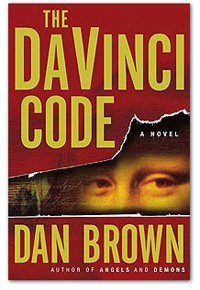
Dan Brown is the Pringles® of fiction authors. I dare you to read one chapter and stop. His gift is taking advantage of a book’s natural ending of each chapter. An author is supposed to tie up the previous chapter’s plot in a big pretty pink bow for the reader, but not too tight, of course. Close the book. Turn off the light. Good night, don’t let the bed bugs bite. Not Dan Brown. He makes you read until it hurts. He makes you want to keep turning those pages, damn Father Time and damn any early morning meetings.
Ogilvy called it the power of curiosity. Your writing should do the same. Make your headline pique the curiosity of your reader and set up your copy. Make your first paragraph set up your second paragraph. Make your last paragraph set up your call-to-action. You’re dancing the fox trot. No stopping. Just continuous, smooth movement that refused to let your partner’s mind wander. This seems obvious until your lift truck client asks for a 12-page brochure in four days. Time to stretch.
33. Help the reader.
At the very core of inbound marketing is a principle that scares the hell out of traditional marketing: free. The premise is that if you help others—truly help them by sharing great content and advice—they will trust you. Trust eventually leads to sales. Which can lead to a brand champion.
The web is not full of millionaire inbound marketing companies. Yet.
This mantra of helpfulness is what drove Ogilvy every day. He believed that a helpful headline “hooks 75% more readers than copy, which deals entirely with the product.” Cha-ching. Financial gazillionaire Dave Ramsey has the four rules of selling:
- Engagement
- Rapport
- Trust
- Close
You can’t go from engagement to close without hurt feelings. I believe helpfulness is a dying trait of traditional agencies. Which is why they’re slowly dying. What you see today are factions of agency disciplines taking money out of the pockets of the big boys.
- Want a social media campaign? Call a social media company.
- Want a direct mail campaign? Call a direct mail guru.
- Want a Google PPC campaign? Don’t call an advertising agency holding company.
If you’re not helpful, you will not survive. Same goes for your clients. Dan Ariely, who I’ll go in detail more in tip #36, has performed extensive research in the behavioral science phenomenon of “reciprocation.” When someone helps you, you are more apt to comply with their wishes. Kinda sneaky, I know, but keep your heart in the right place, OK? Make your headlines answer a problem. Make your copy dramatize the problem and the solution.
This “helpfulness” rule applies to more than your writing. If a young writer emails you for advice, answer her. At the very least, flag that email and get back to her tomorrow. The golden rule still rules. It’s cheesy, but it’s true. If you give the reader what they want, and you give the client what they want, you will make money.
Make sure you also give the client what they need, not always what they want. If they want a monkey juggling a dog, explain why this is not a wise decision. If they refuse, find another client. Some people just can’t be helped.
34. “Learn to write lucid interoffice memoranda.”
Stop rolling your eyes. I have seen the power of lucid interoffice memoranda make millions. OK. Maybe hundreds. OK. I won a Coke. The basis of this tip is this: spend time communicating online and on your desktop. Do not forward emails. This disease has plagued corporate America for long enough. Take the time to put your thoughts to “paper.” If you send your copy through email, type up a lengthy, lucid description (whether it’s to your client, your coworkers or your consultant). Use subheads. Bold words. Sell the hell out of your work.
Writing Tip: When presenting work via email, make a PDF. Add blank pages with titles and short descriptions that explain your thought process.
[Tweet “You never know who the hell an email will be forwarded to.”]
True story: I sent an account executive a list of headlines to gauge their reaction. (Honestly, I wanted their input.) Days go by. I forget about the project. Two weeks later, feedback comes from Scotland. Scotland? Yes, Scotland. The AE sent it to the account director who sent it to the client who sent it to her boss who then forwarded it to her superiors who forwarded it to Scotland. Do not assume anything in corporate America. Add your logo to every document and add your thoughts to every email. Otherwise, Scotland.
35. Know your weaknesses.
- I procrastinate when writing brochures.
- I’m too picky when I write taglines.
- I don’t do tearjerkers.
Now it’s your turn. Write down your three biggest writing weaknesses. Most self-help books would now ask you to work on these three weaknesses one hour every day, until you can overcome them. Phooey. I say, to overcome your weakness, avoid them. Focus on your positives and work on them four hours a day. Make your strengths stronger and pass off your weaknesses.
Ogilvy seemed to agree with me. When discussing television copywriting, he admitted, “out of 50 copywriters in my agency, 37 can write TV better than I can.”2 Could he have kicked the crap out of the young copywriters? Sure. Eventually. But he focused on what he did best: write the hell out of print and direct mail advertisements. He left TV to the experts. Regarding outdoor, Ogilvy admitted he wasn’t a guru. “If you know more than [me], please tell me.”3
Here’s how I avoid my weaknesses: When writing a brochure, I start the very day I receive the brief. Procrastination doesn’t stand a chance. When I receive a brief for an emotional sell, I give to a copywriter who excels in tugging heart strings. When I write taglines, I don’t pick the best. I let a copywriter I trust choose the best.
Don’t fall for the mantra of working on your weaknesses. Know them and keep them at arm’s length. But rock out what you’re great at. And keep getting better.
36. Write. Then wait.
In a 1982 office memo, Ogilvy told his colleagues to “never send a letter or memo the day your write it.” This also pertains to advertising copywriting. Today’s want-it-now mentality often contributes to hackneyed, rushed headlines and poorly written body copy. But enough excuses.
If you have one hour to write a headline, write as many as you can in 45 minutes. Then take a five minute walk and sit back down. How solid are those headlines? Can you beat them? You have 10 minutes. Push perfectionism aside and write furiously. That impending doom of failure is what drives 94.5% of writers. (I made that statistic up.) This self-imposed deadline is proven to be effective. Behavioral science expert Dan Ariely conducted a study that was published in Psychological Science, titled “Procrastination, Deadlines and Performance: Self-Control by Precommitment.” (What, you didn’t get it in the mail?)
His findings: People who set self-imposed deadlines overcome procrastination. And self-imposed deadlines are effective in improving task performance.
Buy his book. And follow Dan’s blog religiously to gain insight on how and why we behave as consumers. Homework: Build up writing calluses: on your fingers and in your brain. Build them as strong as a submarine hull. So when a real deadline hits, you can laugh in its stupid face and write an award-winning headline that sells the hell out of some products.
37. Keep writing.
According to Jack Nicklaus, he never missed a short putt that counted.
According to David Ogilvy, he sold every single ad until he was 53.
If you believe these stats, you’re as gullible as they are. Of course, Nicklaus missed short putts. Maybe countless short putts. But to him, he made them all. Of course, Ogilvy’s ads died horrible deaths. Probably a few times every month. But to him, he was a selling machine. Both immortals follow the premise of the great George Costanza, who said, “It’s not a lie…if you believe it.”
Fact: Your tag lines will die. Your brochures will creep to nine versions. Your idea that won the big pitch will never come to life. Welcome to advertising and marketing. The trick to success is to keep writing. Keep concepting. Keep pushing and pushing and focus on your successes.
We all have doubts. Even Ogilvy hinted at failure when his “first” ad died at age 53. He said, “This makes me wonder whether I really ought to go on writing.”2 It’s easy to give up. Our batting average is worse than baseball, where failing two out of every three times is a Hall-of-Fame career. Keep writing.
38. Drink.
“Many people—and I think I am one of them—are more productive when they’ve had a little to drink.”2

